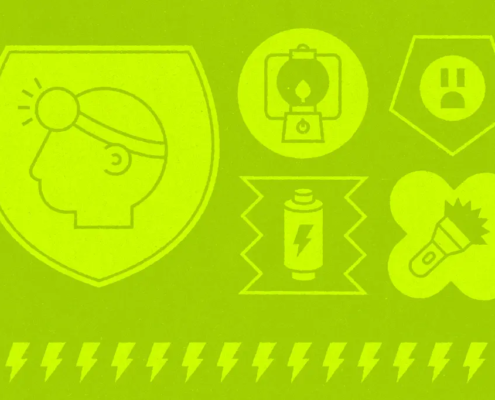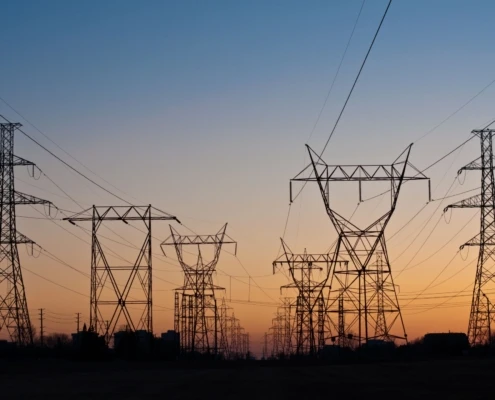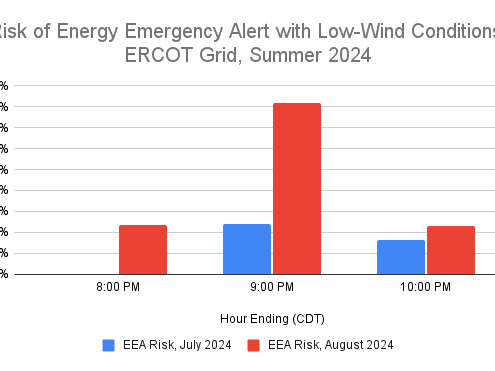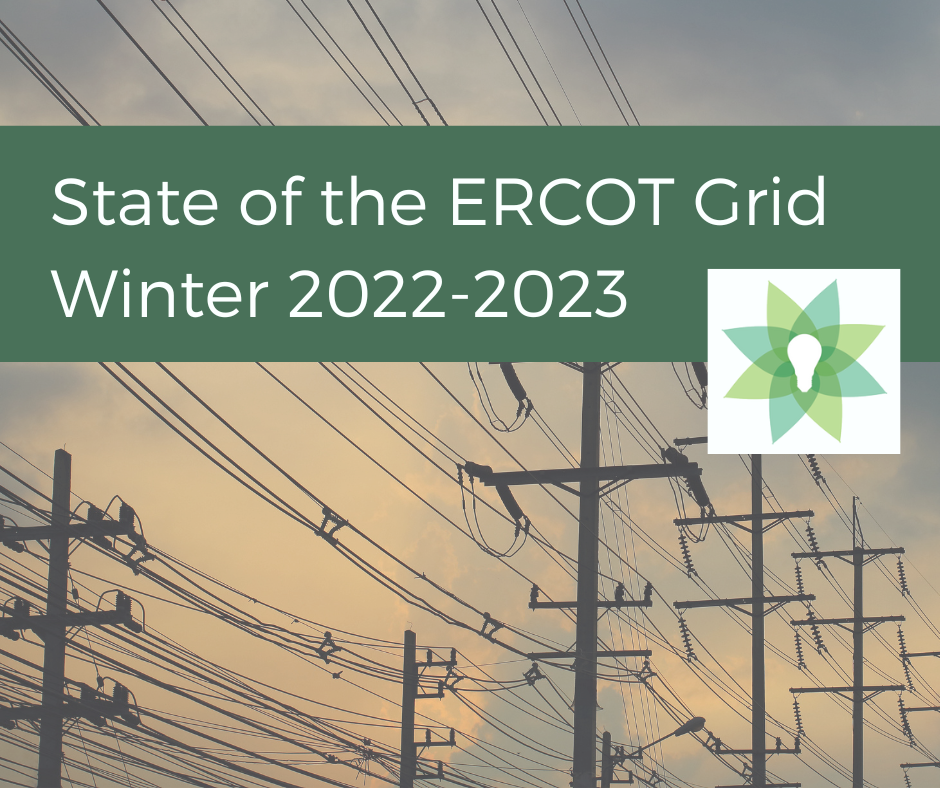Last Updated on November 27, 2022 by Mary Pressler
Is the ERCOT Grid Prepared For Winter in Texas?
As a new winter approaches, many Texans want to know if the ERCOT power grid is ready to handle an extreme winter weather event. The North American Electric Reliability Corporation (NERC) publishes seasonal reliability assessments of all power grids in the US and Canada, and this includes the ERCOT region. Their 2022-2023 Winter Reliability Assessment was published in November, and it covers December 2022 – February 2023.
NERC has found that the Texas power grid is ready for winter, in most cold weather scenarios. Here’s what they’ve reported:
The Latest ERCOT Reserve Margins
- NERC has estimated a reserve margin of 36.4% for ERCOT under normal operating conditions.
- Their minimum reserve margin for ERCOT is 13.75%, which means Texas has enough resources to ensure a stable power supply under typical winter weather.
If the ERCOT grid suffers multiple power plant outages at once, the reserve margin would drop to an estimated 20.4%, which is still higher than the NERC reference level. In the extreme case of another event like Winter Storm Uri, ERCOT would deal with a power shortfall of -21.4%. This is the worst-case scenario, where Texas would be affected by rolling blackouts again. However, this scenario has low probability of happening according to NERC.
Risk Factors That Could Put a Strain on the Grid
The NERC 2022-2023 Winter Assessment identifies four main risk factors that could tighten power supplies throughout the US:
- Dealing with peak demand higher than projected values, due to extreme cold.
- Inadequate power plant weatherization.
- Fuel supply risks.
- Natural gas infrastructure that is vulnerable to extreme weather.
In the case of Texas, the most dangerous scenario identified by NERC is having a large number of forced generator outages during an extended cold period. There would be a capacity shortfall of -21.4% under worst-case conditions, but otherwise ERCOT has enough resources to meet demand.
Available Generation and Projected Demand of The ERCOT Grid: Winter 2022-2023
NERC provides a detailed breakdown of generation resources and demand in Texas, and how they could be affected under extreme conditions.
| Description | NERC Estimates |
| Winter 2022-2023 Anticipated Resources | 86.1 GW |
| Typical Maintenance Outages | -1.2 GW |
| Typical Forced Outages | -8.9 GW |
| Resource Derating Under Extreme Conditions | -11.5 GW |
| Operational Mitigations | +1.6 GW |
| Winter 2022-2023 Net Internal Demand | 63.1 GW |
| Extreme Winter Peak Demand | 80.8 GW |
| Expected Operating Reserve Requirement | 1.0 GW |
As you can see in the table above, ERCOT has a reserve margin of 36.4% (23 GW) under normal conditions: 86.1 GW available to cover a demand of 63.1 GW.
Under typical maintenance outages (-1.2 GW) and forced outages (-8.9 GW), there is still 76 GW available to cover a 63.1 GW demand. The reserve margin decreases to 20.4% (12.9 GW) in this case.
Extreme conditions similar to the February 2021 winter storm would derate the available capacity by 11.5 GW, leaving only 64.5 GW available. Extended cold weather could increase demand to 80.8 GW, with an operating reserve requirement of 1.0 GW. This would create a shortfall of -21.4% (17.3 GW), and ERCOT would be forced to use rolling blackouts. However, this scenario only occurs during another extreme weather event of the same magnitude and intensity as Winter Storm Uri.
The following table compares ERCOT’s current reserve margin from one year ago (winter 2021-2022). Although Texas had a higher margin last year, the value remains well above the NERC reference value of 13.75%.
| Power Demand, Generation Resources & Reserve Margins | Winter 2021-2022 | Winter 2022-2023 |
| Total Internal Demand | 62,001 MW | 66,436 MW |
| Demand Response Available | -2,598 MW | -3,302 MW |
| Net Internal Demand | 59,403 MW | 63,134 MW |
| Anticipated Generation Resources | 84,318 MW | 86,142 MW |
| Anticipated Reserve Margin | 41.9% | 36.4% |
The ERCOT Grid and New Weatherization Standards
The ERCOT reserve margin decreased slightly from 41.9% to 36.4% (-5.5%), but the Texas PUCT has been taking several steps to improve cold weather resilience. The following are some of the measures being implemented:
- New weatherization standards for power generators and natural gas facilities.
- ERCOT has contracted an additional 2,900 MW of firm resources for winter.
- Gas-fired generators are required to store backup fuel for 48 hours in case of an extended supply interruption.
- ERCOT conducted 324 weather preparedness inspections in 2021, in the aftermath of Winter Storm Uri.
NERC concludes that the risk of another energy emergency resulting from extreme weather in the ERCOT region has been reduced, but not eliminated completely. NERC has determined a low probability of energy emergency events, and they have forecast that the peak load hour will be 7:00 AM – 8:00 AM.
The Texas Electric Grid Is Expected To Hold Up This Winter
This year, NERC assessment of the ERCOT grid is much more favorable compared with 2021. Electricity demand surpassed 80 GW for the first time on record in summer 2022, but ERCOT could manage the power supply without resorting to scheduled blackouts.
- ERCOT has more than enough generation capacity to meet peak demand in winter 2022-2023, with a reserve margin of 36.4%.
- Texas should be free of rolling blackouts this winter under normal operating conditions and moderate risk scenarios.
- However, the grid could be taken to its limit under a combination of multiple power plant outages during an extended cold period.
Unfavorable weather has become a challenge for power grid operators in the US. Climate Central conducted a detailed analysis of power outages, including data from the US Department of Energy, and they determined that weather-related outages have increased by 67% since the year 2000.
Homes and businesses can contribute to grid reliability by implementing energy efficiency measures, while reducing their power bills in the process. Setting back the thermostat 7-10°F is a quick and simple measure that can reduce the energy consumption of HVAC systems by up to 10%.
Share this entry
 https://quickelectricity.com/wp-content/uploads/2024/10/Does-Temperature-Affect-Your-Electricity-Bill.jpeg
1024
1024
Kelli
https://quickelectricity.com/wp-content/uploads/2021/10/Quick-Electricity-Logo--300x79.jpg
Kelli2024-10-18 06:06:002024-10-18 06:07:12Does Temperature Affect Your Electricity Bill?
https://quickelectricity.com/wp-content/uploads/2024/10/Does-Temperature-Affect-Your-Electricity-Bill.jpeg
1024
1024
Kelli
https://quickelectricity.com/wp-content/uploads/2021/10/Quick-Electricity-Logo--300x79.jpg
Kelli2024-10-18 06:06:002024-10-18 06:07:12Does Temperature Affect Your Electricity Bill? https://quickelectricity.com/wp-content/uploads/2024/09/What-Appliances-Use-the-Most-Energy.jpg
512
768
Mary Pressler
https://quickelectricity.com/wp-content/uploads/2021/10/Quick-Electricity-Logo--300x79.jpg
Mary Pressler2024-09-16 07:54:382024-09-16 07:54:38What Appliances Use the Most Energy?
https://quickelectricity.com/wp-content/uploads/2024/09/What-Appliances-Use-the-Most-Energy.jpg
512
768
Mary Pressler
https://quickelectricity.com/wp-content/uploads/2021/10/Quick-Electricity-Logo--300x79.jpg
Mary Pressler2024-09-16 07:54:382024-09-16 07:54:38What Appliances Use the Most Energy? https://quickelectricity.com/wp-content/uploads/2024/09/Recommended-Thermostat-Settings-for-Summer.jpg
425
800
Mary Pressler
https://quickelectricity.com/wp-content/uploads/2021/10/Quick-Electricity-Logo--300x79.jpg
Mary Pressler2024-09-04 00:11:502024-09-10 00:13:22Recommended Thermostat Settings for Summer
https://quickelectricity.com/wp-content/uploads/2024/09/Recommended-Thermostat-Settings-for-Summer.jpg
425
800
Mary Pressler
https://quickelectricity.com/wp-content/uploads/2021/10/Quick-Electricity-Logo--300x79.jpg
Mary Pressler2024-09-04 00:11:502024-09-10 00:13:22Recommended Thermostat Settings for Summer https://quickelectricity.com/wp-content/uploads/2024/08/The-Ultimate-Power-Outage-Kit-List-for-2024.webp
683
1024
Mary Pressler
https://quickelectricity.com/wp-content/uploads/2021/10/Quick-Electricity-Logo--300x79.jpg
Mary Pressler2024-08-27 02:47:392024-08-27 08:12:59The Ultimate Power Outage Kit List for 2024
https://quickelectricity.com/wp-content/uploads/2024/08/The-Ultimate-Power-Outage-Kit-List-for-2024.webp
683
1024
Mary Pressler
https://quickelectricity.com/wp-content/uploads/2021/10/Quick-Electricity-Logo--300x79.jpg
Mary Pressler2024-08-27 02:47:392024-08-27 08:12:59The Ultimate Power Outage Kit List for 2024 https://quickelectricity.com/wp-content/uploads/2024/07/6-Electrical-Safety-Rules-for-Your-Rental-Property-1.png
3648
5472
Mary Pressler
https://quickelectricity.com/wp-content/uploads/2021/10/Quick-Electricity-Logo--300x79.jpg
Mary Pressler2024-07-30 16:15:192024-07-30 16:15:19Electrical Safety For Rental Properties
https://quickelectricity.com/wp-content/uploads/2024/07/6-Electrical-Safety-Rules-for-Your-Rental-Property-1.png
3648
5472
Mary Pressler
https://quickelectricity.com/wp-content/uploads/2021/10/Quick-Electricity-Logo--300x79.jpg
Mary Pressler2024-07-30 16:15:192024-07-30 16:15:19Electrical Safety For Rental Properties https://quickelectricity.com/wp-content/uploads/2024/07/Lubbock-Electricity-Bill-Explained-scaled.jpg
1360
2048
Mary Pressler
https://quickelectricity.com/wp-content/uploads/2021/10/Quick-Electricity-Logo--300x79.jpg
Mary Pressler2024-07-21 08:55:502024-07-23 20:14:08Your Lubbock Electricity Bill Explained
https://quickelectricity.com/wp-content/uploads/2024/07/Lubbock-Electricity-Bill-Explained-scaled.jpg
1360
2048
Mary Pressler
https://quickelectricity.com/wp-content/uploads/2021/10/Quick-Electricity-Logo--300x79.jpg
Mary Pressler2024-07-21 08:55:502024-07-23 20:14:08Your Lubbock Electricity Bill Explained https://quickelectricity.com/wp-content/uploads/2024/06/Risk-of-Energy-Emergency-Alert-with-Low-Wind-Conditions-ERCOT-Grid-Summer-2024.png
371
600
Mary Pressler
https://quickelectricity.com/wp-content/uploads/2021/10/Quick-Electricity-Logo--300x79.jpg
Mary Pressler2024-06-26 09:47:422024-06-26 09:47:42Texas Electricity Outlook Summer 2024
https://quickelectricity.com/wp-content/uploads/2024/06/Risk-of-Energy-Emergency-Alert-with-Low-Wind-Conditions-ERCOT-Grid-Summer-2024.png
371
600
Mary Pressler
https://quickelectricity.com/wp-content/uploads/2021/10/Quick-Electricity-Logo--300x79.jpg
Mary Pressler2024-06-26 09:47:422024-06-26 09:47:42Texas Electricity Outlook Summer 2024 https://quickelectricity.com/wp-content/uploads/2022/08/Texas-Electricity-Broker-.png
1080
1080
Mary Pressler
https://quickelectricity.com/wp-content/uploads/2021/10/Quick-Electricity-Logo--300x79.jpg
Mary Pressler2024-06-18 16:14:522024-06-22 08:43:08Commercial Energy Broker in Texas
https://quickelectricity.com/wp-content/uploads/2022/08/Texas-Electricity-Broker-.png
1080
1080
Mary Pressler
https://quickelectricity.com/wp-content/uploads/2021/10/Quick-Electricity-Logo--300x79.jpg
Mary Pressler2024-06-18 16:14:522024-06-22 08:43:08Commercial Energy Broker in Texas https://quickelectricity.com/wp-content/uploads/2024/05/Electricity-Options-Texas.jpg
627
1200
Kelli
https://quickelectricity.com/wp-content/uploads/2021/10/Quick-Electricity-Logo--300x79.jpg
Kelli2024-05-14 04:05:352024-05-14 04:05:35Demystifying Energy Contracts: What Texans Need to Know
https://quickelectricity.com/wp-content/uploads/2024/05/Electricity-Options-Texas.jpg
627
1200
Kelli
https://quickelectricity.com/wp-content/uploads/2021/10/Quick-Electricity-Logo--300x79.jpg
Kelli2024-05-14 04:05:352024-05-14 04:05:35Demystifying Energy Contracts: What Texans Need to Know

Leave a Reply
Want to join the discussion?Feel free to contribute!